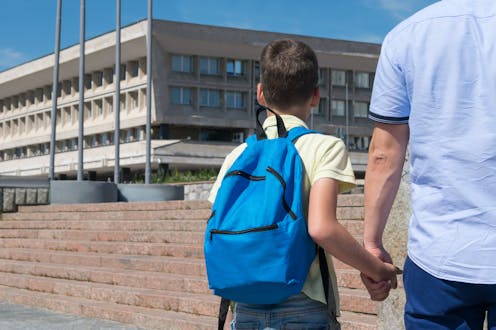
The pandemic has exacerbated the problem of school absences. When schools reopened, fewer pupils went to school than before the COVID-19 school closures.
In England, 25% of students were consistently absent – missing 10% or more of classes – in the 2022 autumn term. Before the pandemic, that number was only around 10%. The reported increase in absenteeism is most likely the result of the difficulties that young people faced during the period of home learning, as well as for some, extended disengagement from school during school closures.
Students who attend school less frequently perform worse academically and are more likely to be excluded from school and to drop out. They may also feel less connected to their classmates and find it hard to get back into school. This may hinder their social and emotional growth.
Absences from school have long-term consequences that extend beyond school and into adulthood. In a pre-print study (which means it has not yet been reviewed by other scientists) we have found that children who are persistently absent are more likely to obtain no qualifications and to be out of the labour force by mid-adulthood.
As a result, if the pandemic effects on school attendance are not addressed, they will have negative consequences for children’s educational achievement and future outcomes.
Causes of school absences
There are numerous causes of school absence, but not all students are at the same risk of being absent from school. Growing up in socioeconomically disadvantaged circumstances is a major cause of persistent school absenteeism. In England, 35% of pupils on free school meals were persistently absent in the 2021-22 autumn and spring terms – compared to 18% of pupils not eligible for free school meals.
It is hard to find direct evidence of why this is the case. In part, though, it may result from the impact of low socio-economic status on parenting. For instance, parents in lower-income jobs may be on rigid work schedules without the flexibility afforded to jobs with higher salaries. This may mean that they are unable to be involved in school or are not able to keep a close eye on whether their children are attending.

Poverty does not just affect unauthorised absences. Its known impact on health and family stress also leads to higher rates of authorised absences from school as a result of sickness or family emergencies.
Specific sociodemographic groups are also at a much greater risk of persistent absenteeism, such as Gypsy, Roma and Traveller children. In this case, the poverty faced by Gypsy, Roma and Traveller families is likely to be a cause, along with the discrimination and bullying children may face at school.
A recent meta-analysis (scholarship which analyses the findings of numerous research studies) found additional risk factors for school absences. For example, pupils with physical or mental health problems, such as depression and anxiety, are more likely to miss school. Risky behaviours, like drinking or using drugs, can also make it harder to go to school.
Things that happen at school can also be a risk for non-attendance. For example, a bad relationship between a teacher and a student, a low-quality education, or a negative school or class climate can make it less likely for a student to go to school.
Supporting schools and families
Since family socioeconomic status is a key risk factor for not going to school, improving family finances and combating child poverty should be at the centre of efforts to get more pupils to school.
Methods to reduce absenteeism should be tailored to the needs of individual pupils. The emphasis should also be on addressing the causes of both authorised and unauthorised absences, as both are equally harmful.
Improved communication between schools and parents, discussions with parents about the reasons for non-attendance, and planning support for students and their families to overcome attendance barriers are ways to tackle school absence.
Overall, supportive approaches – such as parents encouraging their children to attend school – are better than punitive ones, such as financial and legal penalties. This is partly because punitive approaches do not address the underlying causes of absences such as poverty or health difficulties.
Reducing the negative effects of school absences on children’s life chances is critical. This could be done, for instance, by providing extra academic support to frequently absent children during and after school, or by trying to get children more engaged by providing social activities and boosting connections between classmates and also between pupils and teachers.
Markus Klein receives funding from the Economic and Social Research Council (ESRC) Secondary Data Analysis Initiative Award ES/R004943/1. He receives funding from the Nuffield Foundation (grant number FR-000023241), but the views expressed are those of the author and not necessarily the Foundation. Visit www.nuffieldfoundation.org
Edward Sosu receives funding from the Economic and Social Research Council (ESRC) Secondary Data Analysis Initiative Award ES/R004943/1. He receives funding from the Nuffield Foundation (grant number FR-000023241), but the views expressed are those of the author and not necessarily the Foundation. Visit www.nuffieldfoundation.org
This article was originally published on The Conversation. Read the original article.







